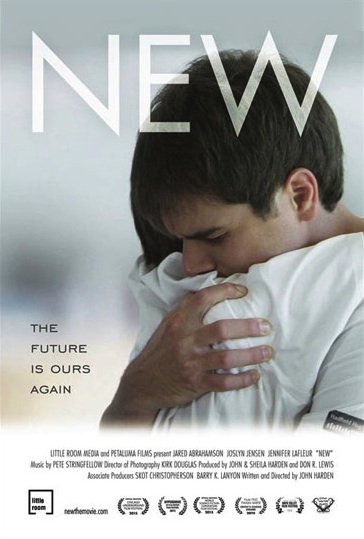ASK & DISCUSS
INDEXStatistics on crowd-funding campaigns for films
12 years ago - Catsnake Film
I have had a noodle around the stats for crowd-funded film projects and published the results here http://stephenfollows.com/the-statistics-on-improving-your-crowd-funding-campaign/
Some of the stuff I found includes ...
**** Longer campaigns fare worse than shorter ones - For an average $10,000 project, a 30-day project has a 35% chance of success, while a 60-day project has a 29% chance of success, all other things being the same.
**** Having a video increases your odds of success two and half times - All else being equal, a project without a video only has a 15% chance of success while a project with video has a 37% chance of success. As filmmakers, this becomes more acute as your audience will want to see that you can deliver on your grand claims. A good example is the video Kenny Gee made for his IndieGoGo campaign to fund his short film ‘The Body’.
**** Being a ‘featured’ project helps enormously - Projects that are ‘featured’ by Kickstarter have an 89% chance of being successful, compared to 30% without.
**** Facebook friends count - For an average $10,000 project, if you have 10 Facebook friends, you have a 9% chance of succeeding. If you have 100 Facebook friends, it’s 20% and if you’re fortunate enough to have 1,000 Facebook friends then your chances of succeeding are 40%.
**** It helps if you live in a ‘creative’ city. It’s no surprise to learn that film projects are most successful when the founder is based in Los Angeles, and the pattern holds for other fields, such as music projects being most popular in Nashville and technology projects in San Francisco. However, the correlation is deeper than just these iconic examples. When Professor Ethan Mollick looked at this issue he found that “the higher the proportion of creative individuals in a founder’s city, the higher the chance of success for that founder.”
**** The more you ask for, the lower your chances of success. If all other factors are equal, projects under $10,000 have a 38% success rate, projects under $50,000 have an 18% success rate and projects under $100,000 have a 7% success rate.
There's much more at http://stephenfollows.com/the-statistics-on-improving-your-crowd-funding-campaign/
Only members can post or respond to topics. LOGIN
Not a member of SP? JOIN or FIND OUT MORE
12 years ago - John Lubran
I must have misrepresented myself Dan. Kickstarter has enabled millions of money units to be raised for thousands of films, so it clearly is a good place to crowd fund for many, especially with micro to low budget projects. However the numbers of projects that don’t get funded are many times more if I have understood the data correctly, especially with respect to big budget feature documentaries (over $1.6m), which is of particular interest to me.
The point I’m making is that the Kickstarter model/methodology for crowd funding is not definitive, there are others. I have to declare a self interest here in that I don’t intend to reveal the specific details of our own plan, yet, because it’s a business plan that we don’t want crowded until after we’ve succeeded. However Dan’s reason for contributing $10 to that Asian actress is an example that’s not a million miles from it. We can also learn from Frannie Armstrong’s ‘Age of Stupid’ which raised several hundred thousand pounds without using prescribed methods and facilities, after which Frannie and her team generously divulged much of their methodology.
There are other issues with the Kickstarter model that some folk would rather not engage with. The ‘blunt’ withdrawal of opportunity based on time limits and not raising specific amounts of funding within that time limit prevent a much more flexible, nuanced and often otherwise attainable outcome to be achieved. Recorded ‘failures to launch’ are an unnecessary additional burden for projects that continue to try after Kickstarter. Of particular concern to many who might otherwise explore using Kickstarter are the numerous legislative hurdles created by governments on both sides of the Atlantic, especially to an onerous extent on the USA side. Powerful elites may publically express a regard for crowd funding but in reality they don’t like ordinary people taking charge of their own financial systems outside of governments, central banks, their banking-broking placemen and corporate-political familiars. They use spurious quasi moral legislation (not law per se) as a method of trying to keep as many of the levers of control with those powerful elites; a good example of which is their failed attempts to discredit and destroy Bitcoin. As the old proverb says “there are many ways to skin a cat”.
12 years ago - Dan Selakovich
Ah, yes, that makes all sorts of sense, John.
Here in the U.S., President Obama is trying to make crowdfunding an investment, not a donation. It's a great idea, but I don't see this getting anywhere in the current wall street ownership of our country. Currently, the SEC rules for investment are strict and extremely limiting.
12 years ago - Dan Selakovich
Hi John, could you expand on Kickstarter? Why is it a blunt instrument? Why is it not a good crowd funding site for film?
I found this very interesting, Catsnake. But here's something that every movement needs: a first follower. I'd be willing to bet that the successful films all have one thing in common; somebody the filmmaker knows that is willing to put up a huge amount in the beginning to grease the wheels. If by the 3rd day, 25 percent of the film is funded, I'm sure there are many that will toss the filmmaker a few bucks. I'm also sure that the successful campaigns have a "back-ender" in place. "If we get within 5 grand of our goal, will you kick in the rest?"
I recently gave a film 10 bucks. The trailer wasn't very good. The filmmaker says she is editing the thing herself (and admitted she'd never edited anything before), she is an actress that wrote the script, she was directing, and starring in her film. All red flags for a crap film. So why did I give? Because she was an Asian actress that was sick of being a stereotype in her career. And she sold the film on that point. It worked. She made her 80,000 dollar goal.
12 years ago - Dan Selakovich
Hmmmm... that seems odd. If I were donating 1000 bucks to an artist, then see a service fee of 50, I might not go through with that donation. I guess it would depend on how Hatchfund sells that service fee idea before you donate.
12 years ago - Dan Selakovich
Wow, a 19 percent kickback. I choked on my coffee when I read that. Thanks for doing all that work! A really informative blog.
12 years ago - John Lubran
Thanks for that posting Catsnake, however Kickstarter is just one of many options for crowd funding and not one that I’m drawn to at all with respect to our current projects. Kickstarter is a very blunt instrument indeed; it may have the caché of fame and being amongst the first in the game but as the analysis suggests it won’t work for the overwhelming majority of applicants.
Naturally it must be true that a great many applicants are naive about their projects in expecting to gather enthusiastic patronage for projects of distinctly uninteresting provenance, just as we see on theses bulletins with people hoping to attract others to work on, collaborate or contribute to their extraordinary/cutting edge/brave/ground breaking etc., film projects. So these statistics that Catsnake has posted hardly mean anything at all because they are as much a blunt instrument as Kickstarter is itself.
What we can gather though, from all of the various models for crowd funding available, is that ideas and projects need to be very compelling, just as they had to be before such funding models were about. Projects that reflect merely egocentric art forms without social resonance are unlikely to gather much of a crowd.
If one was to extract from the data all of the no hopers, downright boring and banal from the equation I imagine that for the remaining projects the prospects for success would be very much higher than those statistics suggest, even with Kickstarter. But don’t forget that what is central to this new crowd funding phenomena is the World Wide Web and the democratisation of information and connectivity. There are places on the Web to crowd fund other than specialist crowd funding websites, particularly where a project strikes a chord with other people’s aspirations, sympathies, socio-political beliefs etc., etc. “Don’t follow leaders watch your parking meters”
12 years ago - John Harden
Hi Dan, yes - since I wrote these articles, USA Projects has changed quite a bit. For one thing, they are now called Hatchfund. More significantly, they now are "free for artists" which means if you make your goal, you receive that amount with nothing deducted. However, this is rather misleading, because during the process of making a contribution, each donor must pay at least 5% (at least it's not 19%!) in addition to whatever amount they are giving. Rather like a service charge. In the end the artist is still raising money and giving some to the crowdfunding operation, it's just "hidden" rather than included in the stated goal. The difference is really psychological.
12 years ago - John Harden
Some very good info here, Stephen, and thanks for posting the link at Shooting People. Last year as I was planning a crowd-funding campaign for my film I did some similar research, as I was trying to decide which platform to use. My side-by-side comparison of Kickstarter and IndieGoGo can be found here:
http://giantspecks.wordpress.com/2012/12/22/crowdfunding-comparison-shopping-kickstarter-vs-indiegogo/
The data is almost a year old now but I imagine mostly still relevant. It might be of use for people trying to make that same choice.





